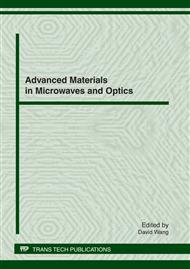p.155
p.162
p.168
p.175
p.180
p.187
p.193
p.198
p.204
Treatment of Cotton Pulp Black Liquor Using Micro-Electrolysis in Sequencing Batch Reactor
Abstract:
Micro-electrolysis process was conducted to treat the anaerobic digestion effluent of cotton pulp black liquor in sequencing batch reactor (SBR). Three key factors including reaction time, pH, and iron-carbon volume ratio were investigated for their impacts on the treatment efficiency. The effluent of micro-electrolysis polished by coagulation process was performed with Al2(SO4)3 and PAC as coagulators. The results show that the optimum conditions of the micro-electrolysis treatment were pH 5.5, iron-carbon volume ratio 1:1, and reaction time 8h. Al2(SO4)3 was selected as the coagulator with the addition of 400mg/L. The removal efficiency of COD reaches 93.2% with Micro-electrolysis combined with coagulation process. In addition, the B/C ratio has risen from 0.016 to 0.68(>0.3), which creates favorable conditions for the subsequent aerobic process. Consequently, the micro-electrolysis and coagulation process are highly efficient to dispose the anaerobic digestion effluent of cotton linters pulp black liquor. What’s more, this technology has the advantages of low operating cost, small land occupation and high efficiency.
Info:
Periodical:
Pages:
180-186
Citation:
Online since:
January 2012
Authors:
Price:
Сopyright:
© 2012 Trans Tech Publications Ltd. All Rights Reserved
Share:
Citation:


